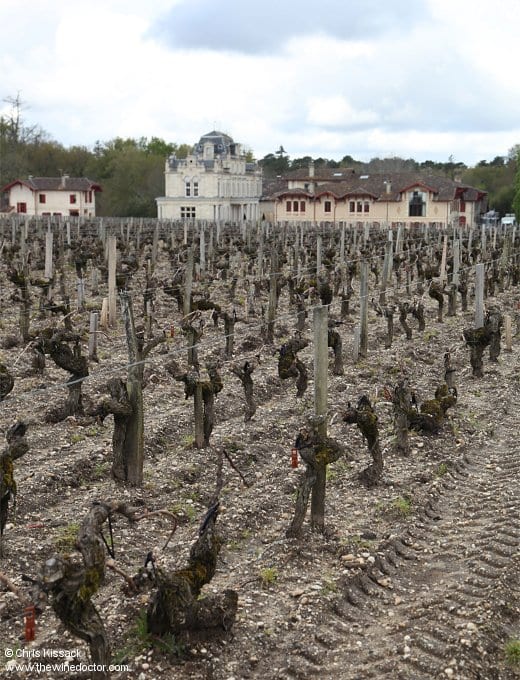Château Giscours: Vineyards
It is difficult to comprehend the size of the Château Giscours estate, unless you set out to explore it, as I did when I visited the estate in 2018, spending an afternoon in the company of technical director Didier Fôret. He chauffeured me along woodland tracks with sandy and gravelly soils; the tree-lined avenue seemed to go on forever, but eventually we came out into sunlight again. Here I was greeted by the sight of not just vineyards, but the ornamental lake built by Nicolas Tari. We continued past it, and we had travelled some distance when, as we sat surrounded by a sea of vines, Didier announced we had reached the periphery of the vineyard. There are in total 400 hectares of land here, with 160 hectares planted to the vine, which makes Château Giscours one of the largest (if not the largest?) of all the Médoc cru classé estates, in terms of its vineyard at least. Of this 160 hectares, 100 hectares are in the Margaux appellation, but 60 hectares are more distant, and have the Haut-Médoc appellation.
The Margaux vineyards of Château Giscours are spread over several gravel outcrops, including the Petit Poujeau, Grand Poujeau and Cantelaude parcels. These tend to have a nutritionally poor, slightly sandy, pebbly soil, over typical Médoc gravel. Some of the best parcels of vines sit in front of the château, to the east, running across to the D2. The Haut-Médoc vines, meanwhile, sit further east in the commune of Macau. The vines are 65% Cabernet Sauvignon (plantings of which have been steadily climbing, both vineyard and grand vin shifting from Merlot to this variety), with 30% Merlot (down from over 40% of the total during the 1990s), 2% Cabernet Franc and 3% Petit Verdot. The vines are planted at as much as 10,000 pieds per hectare, a high density arrangement, and the philosophy of work is conventional, with no recourse to organic or biodynamic methods. The average age is about 40 years, although some very old vines date to 1923. The regularly required tasks in the vineyard, including leaf thinning and a green harvest, are undertaken by hand.

